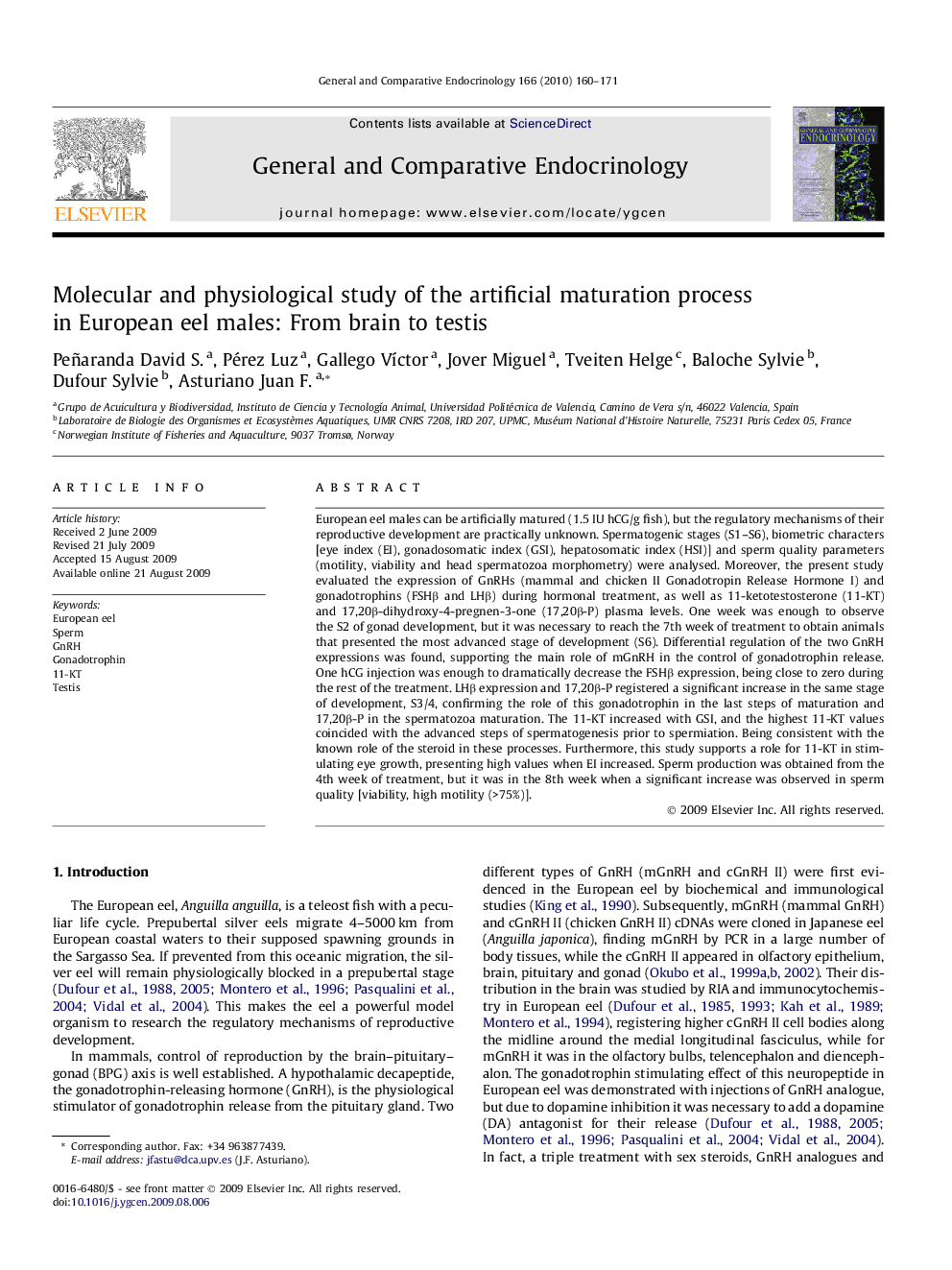| کد مقاله | کد نشریه | سال انتشار | مقاله انگلیسی | نسخه تمام متن |
|---|---|---|---|---|
| 2801377 | 1156156 | 2010 | 12 صفحه PDF | دانلود رایگان |

European eel males can be artificially matured (1.5 IU hCG/g fish), but the regulatory mechanisms of their reproductive development are practically unknown. Spermatogenic stages (S1–S6), biometric characters [eye index (EI), gonadosomatic index (GSI), hepatosomatic index (HSI)] and sperm quality parameters (motility, viability and head spermatozoa morphometry) were analysed. Moreover, the present study evaluated the expression of GnRHs (mammal and chicken II Gonadotropin Release Hormone I) and gonadotrophins (FSHβ and LHβ) during hormonal treatment, as well as 11-ketotestosterone (11-KT) and 17,20β-dihydroxy-4-pregnen-3-one (17,20β-P) plasma levels. One week was enough to observe the S2 of gonad development, but it was necessary to reach the 7th week of treatment to obtain animals that presented the most advanced stage of development (S6). Differential regulation of the two GnRH expressions was found, supporting the main role of mGnRH in the control of gonadotrophin release. One hCG injection was enough to dramatically decrease the FSHβ expression, being close to zero during the rest of the treatment. LHβ expression and 17,20β-P registered a significant increase in the same stage of development, S3/4, confirming the role of this gonadotrophin in the last steps of maturation and 17,20β-P in the spermatozoa maturation. The 11-KT increased with GSI, and the highest 11-KT values coincided with the advanced steps of spermatogenesis prior to spermiation. Being consistent with the known role of the steroid in these processes. Furthermore, this study supports a role for 11-KT in stimulating eye growth, presenting high values when EI increased. Sperm production was obtained from the 4th week of treatment, but it was in the 8th week when a significant increase was observed in sperm quality [viability, high motility (>75%)].
Journal: General and Comparative Endocrinology - Volume 166, Issue 1, 1 March 2010, Pages 160–171